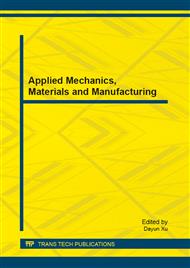p.3
p.13
p.19
p.26
p.33
p.40
p.46
p.51
Investigation of Robust Combination Control for Elastic Vehicle Based on Reduced-Order Model
Abstract:
Putting forward with an integrated flight and aeroelasticity control method of elastic air vehicle and aiming at the reduction errors introduced during combination dynamic model reduction, the paper adopts mixed sensitivity H∞ control to design low-order combination control law that satisfies its robustness based on reduced-order model. Against to the wide reduced-order error bounds that may influence control performance, the two-circuit design method is used, and combined with inner-circuit suboptimal feedback design, error bounds of equivalent model are greatly narrowed. Without any orders extra added to the controllers, the outer-circuit robust controller designed on that basis will effectively improve the performance of the system, significantly superior to the single circuit design method. It is shown in simulation results that such low-order combination law will not only provide satisfactory robustness and performance, but will also effectively suppress the occurrence of servo flutter, while the greatly-reduced orders will be helpful for the realization of projects.
Info:
Periodical:
Pages:
3-12
Citation:
Online since:
August 2013
Authors:
Price:
Сopyright:
© 2013 Trans Tech Publications Ltd. All Rights Reserved
Share:
Citation:


